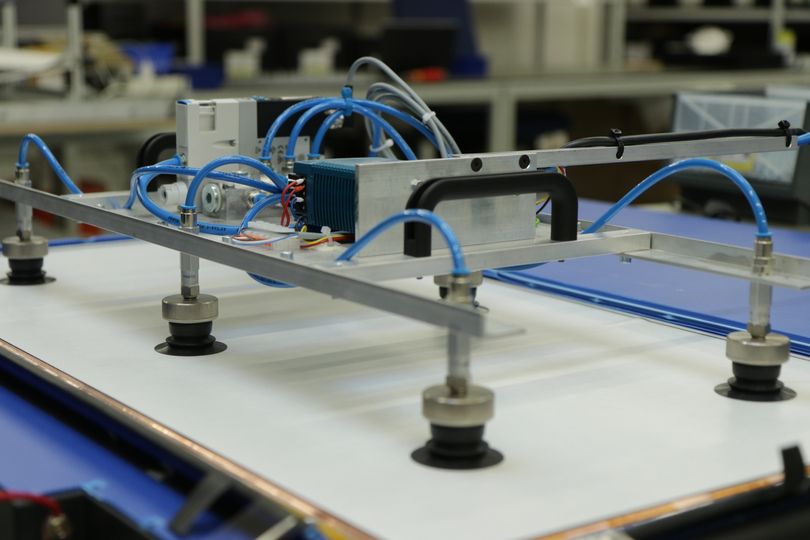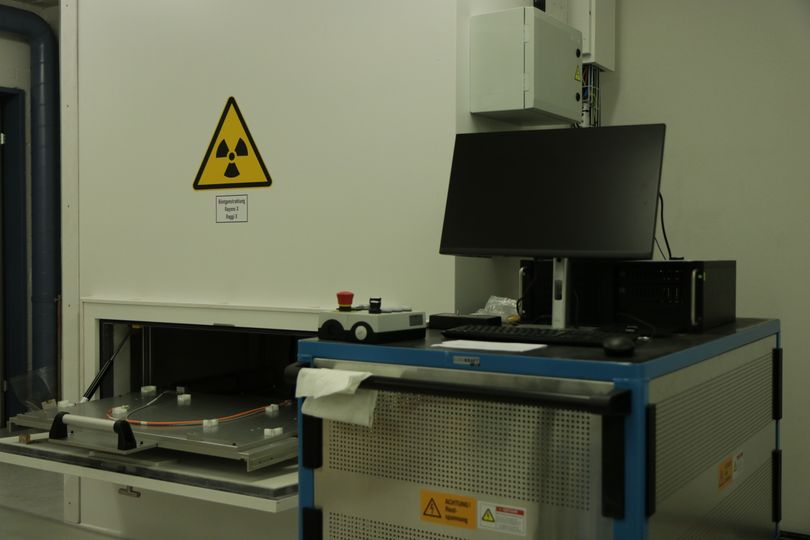Wieso Burn-in Test?
Mit einer Belastungsschnellprüfung (auch Burn-in Test genannt) soll die Grenzlast von Komponenten, Baugruppen oder Komplettgeräten im Dauerbetrieb ermittelt werden. Bei CrossTEQ wird die Belastbarkeit beim Burn-In Test unter extremen Bedingungen, wie hoher Betriebsfrequenz oder Stromspannung während 48 Stunden ohne Unterbruch getestet.
Ziel des Burn-In Tests ist es, vor Anlauf der Massenproduktion Teile zu identifizieren, die verfrüht (vor der Nennlebensdauer) ausfallen könnten.
Testvoraussetzungen und Prüfungsanweisungen für Burn-In Test bei CrossTEQ
Qualifikation
CrossTEQ sorgt dafür, dass das Personal in der Durchführung von Burn-In Tests angemessen geschult ist. Nur regelmäßig geschultes Produktionspersonal, darf Burn-In Test (und Funktionstests sowie Factory Acceptance Tests) durchführen.
Testumgebung und Vorsichtsmaßnahmen
Das CrossTEQ Qualitätspersonal (Produktionsleiter und Leiter der Fertigungstechnik) pflegt und implementiert Arbeitsanweisungen, Richtlinien zur Testumgebung sowie allfällige Vorsichtsmaßnahmen für Funktionstest (insbesondere bei elektrostatisch empfindlichen Geräten!)
Testing Software
Die Test-Anwendungssoftware führt den Tester durch die verschiedenen Testschritte und führt den automatisierten Testabschnitt aus, wo dies möglich ist. Die Testanwendung dokumentiert und erstellt digitale Testberichte, welcher der Tester unterschreiben muss.
Berichte
Abweichungen/Mängel sind auf dem Prüfbericht zu vermerken. Etwaige Korrekturmaßnahmen und die folgenden Regressionstests sind auf Aufforderung der Testanwendungssoftware detailliert zu beschreiben.
Gemäss der Liefervereinbarung archiviert CrossTEQ Berichte als Teil des Device History Record (DHR). Jeder Bericht muss anhand der Teile-Identifikationsnummer und der Seriennummer auf das Bauteil rückführbar sein.
Verantwortung
Erst nachdem die Prüfung erfolgreich ist, wird die Montage der Baugruppe oder des Geräts abgeschlossen. Unser Qualitätspersonal führt den Quality Assurance (QA) Buyoff für die Produktfreigabe durch und bestätigt die ordnungsgemäße Herstellung, Prüfung und Berichterstattung durch elektronische Unterzeichnung, bevor an den Kunden geliefert wird.
CrossTEQ Anwendungen und Beispiele für Grenzlastprüfungen
Regelmässige Aufnahme von Dunkelfeldbildern und Erzeugung von Driftbildern mit Röntgentherapie-Imager
Bei diesem Burn-in Test prüft CrossTEQ einen komplett montierten Strahlentherapie-Imager über eine Dauer von 48 Stunden. Dabei werden in regelmäßigen Abständen Dunkelfeldbilder aufgenommen und Driftbilder erzeugt.
Ziel ist es, frühzeitige Ausfälle von Komponenten zu erkennen und das Fehlerpotenzial im Feld zu reduzieren. Die Bilder werden von der Testsoftware ausgewertet, die aus basierend darauf den Testbericht erstellt. Nach einer einminütigen Wartezeit zum Aufwärmen des Imagers werden die ersten beiden Bilder angefordert und verarbeitet. Das Driftbild und der mittlere Driftwert werden angezeigt.
Bei CrossTEQ sind wir spezialisiert auf die anspruchsvolle Qualitätssicherung von elektrostatisch empfindlichen Baugruppen und Geräten.
Wir montieren, testen und justieren komplexe Baugruppen und hochsensible Mikroelektronik mit dauerhaft höchster Präzision und Zuverlässigkeit.
Das könnte Sie auch interessieren

Function-Testing von Komponenten und Baugruppen
Systematische Prüfung der grundsätzlichen Funktion aller Elektronikkomponenten sowie deren Zusammenspiels.
Anwendungsbeispiel von CrossTEQ: Aufnahme von Testbildern mit Strahlungstherapie-Imager

Finaler Factory Acceptance Test (FAT)
Zur Validierung des Gerätebetriebs und Sicherstellung, dass Bestellspezifikationen und Qualitäts - und Funktionsanforderungen des Kunden erfüllt wurden.
Anwendungsbeispiel bei CrossTEQ: Endabnahmetest (Röntgentest) zur Aufnahme von Röntgentestbildern mit Radiotherapie-Imagers